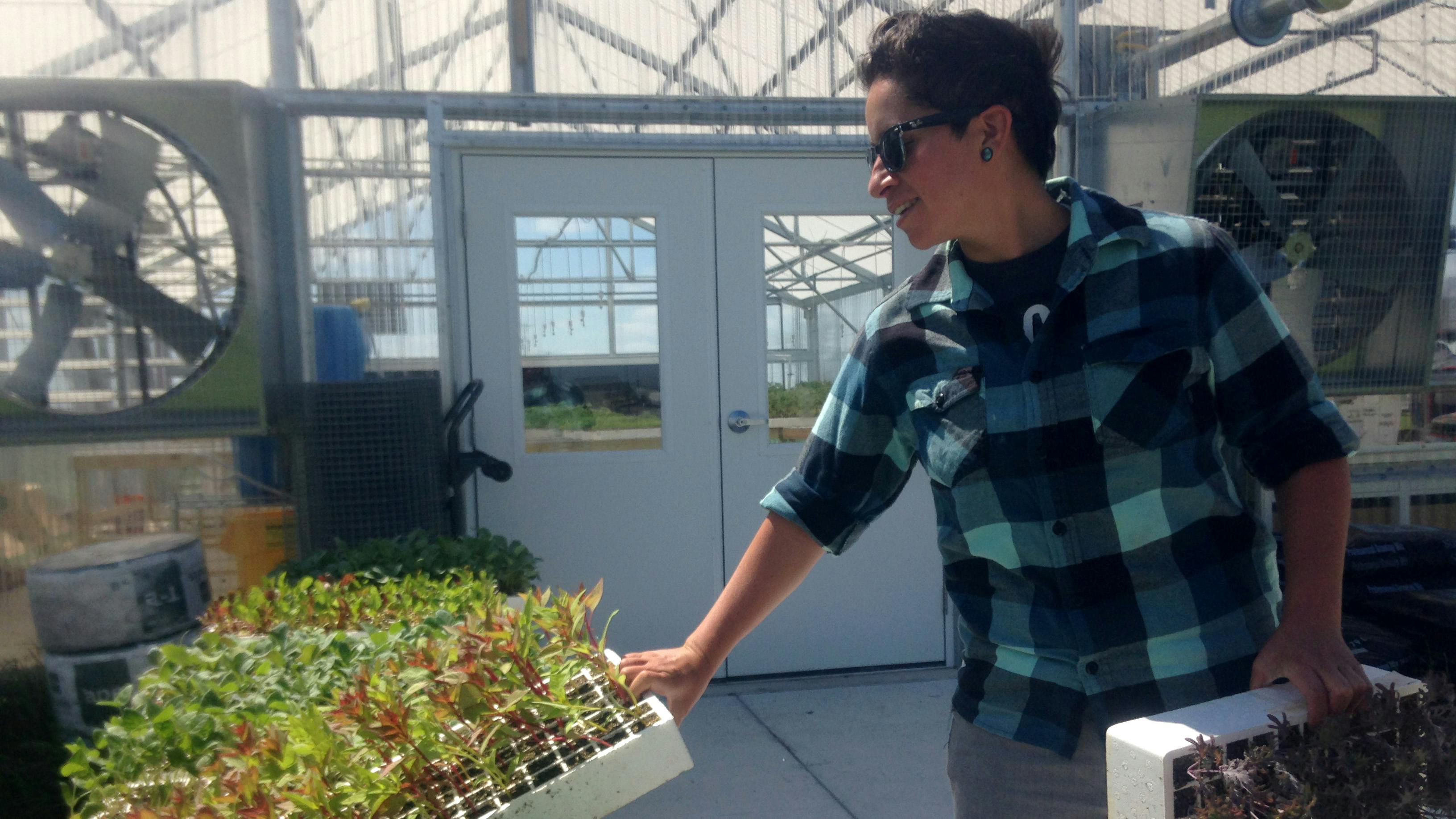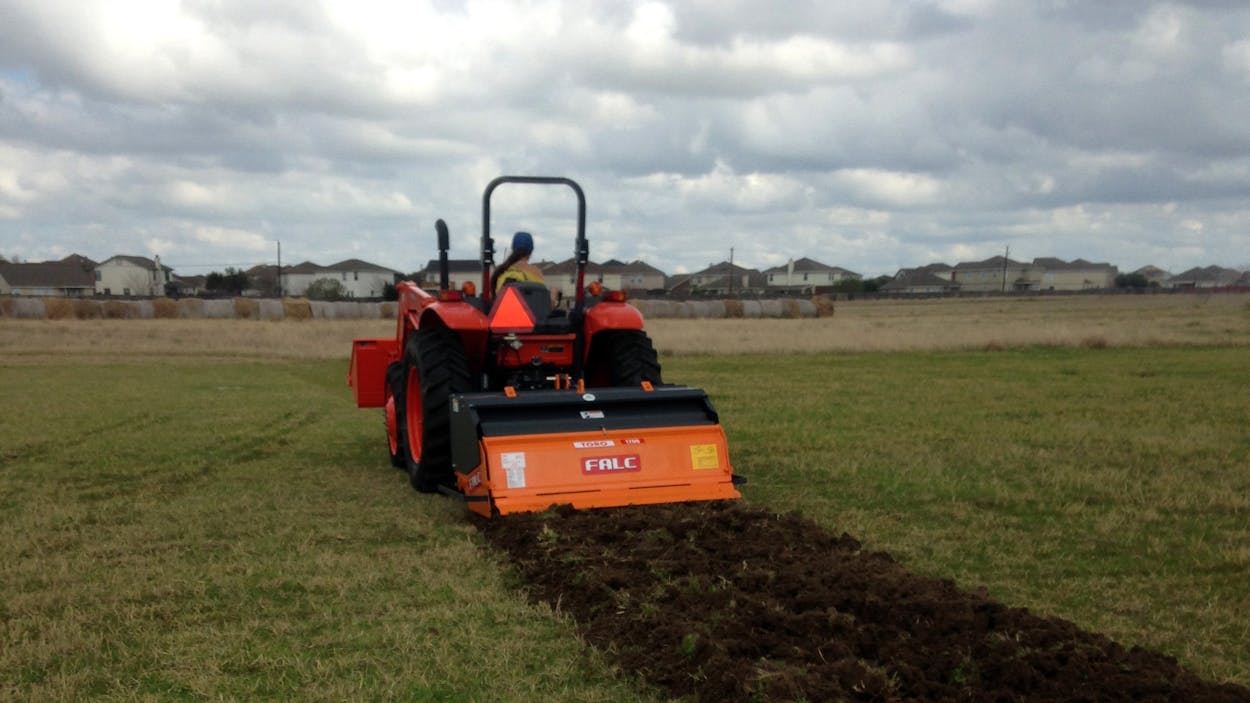When Timothy Gertson finally finished downloading nearly eighty pages of forms from the Texas Department of Agriculture, filling them out the old-fashioned way—by hand—and submitting them, he was one step closer to obtaining a shiny badge of agricultural prestige: a certification for producing organic field corn. “I’m not going to lie,” Gertson says. “It’s pretty intense.”
Gertson comes from five generations of farmers. His grandfather, father, and three uncles currently own Gertson Farms Partnership in Lissie. Gertson and his cousin co-own their own business, G5 Farms, and have land in Fort Bend, Colorado, and Wharton counties. Agriculture is in his blood. Yet even for a man with years of experience under his belt, the shift from conventional to organic agriculture was a veritable obstacle course. And he’s only growing one crop.
Organic farming is an entirely different beast, one that comes with a bushel of bureaucratic and natural barriers. Along with the paperwork, there are fees, which can range from a few hundreds of dollars to a few thousand. The application asks for a detailed catalog of all substances used on the land during a three-year period and a “written Organic System Plan describing the practices and substances to be used.” These measures must be taken into account before the first seed hits the soil.
And from there the real work begins. According to the National Organic Program, the regulatory entity within the U.S. Department of Agriculture, the transition period for farmers switching to certified organic produce lasts 36 months, and it’s only after that period that they can market their produce as organic. But only if the crop can survive through the complicated process of replenishing nutrients in the soil.
Last month, seemingly acknowledging the difficulties, the USDA’s Secretary of Agriculture announced a plan to help farmers in the transition process by “expanding a crop insurance option to allow producers to purchase insurance coverage that better reflects their product’s actual value.” But crop insurance is still sold through private agencies, and the yields for organic produce can be as low as one-third of conventional produce during those three years of transition and after. So the lengthy and costly process isn’t an immediately rewarding investment, which suggests that only veteran farmers with other options, like Gertson, are able to take such risks.
The USDA boasts organics as a $39 billion industry, so there is no debate as to whether the market exists. Stores like Walmart and Costco sell organic produce. You can even buy organic chicken nuggets. For established farmers like Gertson, organic agriculture offers a high demand and equally high premium. “This was purely a business decision for me,” he says. “The price I was offered and contracted for this organic corn [is] exactly three times the price.”
But some of the challenges Gertson observes transcend organics and apply to the industry as a whole, which has changed dramatically since his family started farming. Agriculture can’t guarantee a farmer a paycheck like other jobs, and that uncertainty is unsettling for many young people entering the workforce. Gertson admits he is lucky that his cousin joined him to start their business, but the 31-year-old knows this is an anomaly in his generation. The business is often a family affair; the Texas Department of Agriculture says 98.6 percent of the state’s ranches and farms are run by families or family partnerships. So Gertson’s path to agriculture isn’t uncommon. But neither is the dwindling interest in farming among his generation of siblings and cousins: out of thirteen in his generation, only he and his cousin carried on as farmers.
Meanwhile, the average age of Texas farmers in 2015 was 58—almost two generations ahead of the current working class. “That’s a huge concern of mine—the age,” Gertson says. “That’s a huge concern of the entire industry nationwide.” So with an aging workforce whose children largely aren’t willing to continue farming, the industry is forced to ask itself how to move forward. One of the biggest questions, one that Gertson has already tackled, is the choice between organic and conventional farming. These two practices are often viewed as the only options, but the solution to the the future of agriculture might not be in such black-and-white terms. Farmers who’ve been in the practice for some time are saying we can have our cake (or fruits and veggies) and eat it too with sustainable agriculture.

The USDA refers to sustainable agriculture as “an integrated system of plant and animal production practices having a site-specific application that will, over the long term: satisfy human food and fiber needs; enhance environmental quality and the natural resource base [sic] upon which the agricultural economy depends; make the most efficient use of nonrenewable resources and on-farm resources and integrate, where appropriate, natural biological cycles and controls; sustain the economic viability of farm operations; and enhance the quality of life for farmers and society as a whole.”
Sustainable agriculture does encompass organic farming, but it’s not exclusive to that. The main difference is that sustainable farming is just as much about the practice as it is about the farmer. Or rather, the “quality of life,” meaning that farmers can count on their next paycheck. Sustainable agriculture is not only a solution to keep farmers in the business and consistently producing food, but it’s also a way to market agriculture as a viable career choice for college grads and the emerging workforce. Sustainable farming is a realistic way to draw in outsiders and make agriculture a desirable career again.
Evelyn Rosas is a sustainable agriculture specialist and the coordinator of Austin Community College’s Sustainable Agriculture Entrepreneur Program, which launched this past fall. The program added four new courses for spring 2016 and is set to add classes such as Farm and Ranch Equipment and Integrated Pest Management for Sustainable Agriculture this summer. The curriculum also includes courses such as Marketing for the Small Farm, which prepares graduates for the ins and outs of owning a small business.
Rosas says that the majority of students are in their thirties, with a handful in their twenties. Many agriculture focused accelerator programs require full-time apprenticeships, which can be a daunting option with few guarantees. ACC’s program, however, has more flexibility, offering individual classes throughout the day. The program had thirty students enrolled in at least one class last semester, and is set to see that number increase for spring and the summer. The college is also working on creating a Associate of Applied Science degree within the next couple years.
Similarly, an organization called Farmshare Austin is geared toward providing education and training for young farmers. Executive Director Taylor Cook says one of the main problems individuals who don’t come from agriculture backgrounds face is difficulty navigating available loans and grants. And though that’s a problem for all farmers, she says it’s especially difficult with organic farmers. “There are so many variables that are occurring, but what you will have with conventional agriculture is crop insurance that helps you mitigate that risk factor,” Cook says. “On the business side that is hard to obtain with smaller, organic farms.”
Farmshare Austin teaches the principles of organic farming and owns an organic garden for its skills training; however, their Farmer Starter program is designed to equip its graduates with “the essential skills and training needed to manage a sustainable farming business.”
Cook, Rosas, and Gertson all agree that we should view agriculture as a business first, and one that aims toward long-term profitability. And a huge part of sustainability requires keeping pace with changing practices of agriculture and incorporating developing technologies, something that a younger generation will certainly identify with.
“Agriculture is like the new Silicon Valley,” Gertson says. “I have companies calling me all the time who have this new app or invention or new precision ag hardware that they want me to try.” Gertson frequently flies his drone over his 1,500-acre plot of rice, which reduces the number of hours he has to physically spend in the field. He isn’t completely removed from typical farm labor, though: Gertson still wears his rubber boots, gripping his shovel firmly as he works. But when he comes home later, he’ll pull up Farmworks, a software on his laptop with field mapping, drainage design, and GPS survey capability. “Young people don’t think of ag as like this awesome tech world,” Gertson says. “But it is.” Soon we may start imagining farmers with iPads instead of pitchforks.
The future of farming requires equal if not more attention and resources put toward sustainable farming as opposed to conventional or organic. “There is absolutely no way that the world could be fed on organic agriculture. It can’t be done,” Gertson says. Gertson isn’t a pessimist; he just knows the trade. After all, agriculture exists partly as a consumer trend. We don’t really need organic produce, but it sure is nice to have. And, like most luxury goods, there are always going to be people who will pay for it.
Time, unfortunately, is not a luxury. The world’s population is growing faster than ever, and food security remains a challenge. So there must be a compromise. The antiquated agrarian system of wide pastures, intensive tillage, and an affinity for pesticides cannot persist. Similarly, the champions of organic agriculture, whose stubbornness lacks practicality at times, have to recognize the urgency of the situation. Farming itself is a process of give and take, a process filled with much uncertainty but also an immense trust in the land. And in the same way we respect the earth and its bounty, we must care for our farmers and their livelihoods to ensure that they can continue their role as stewards of the environment and gatekeepers of a sustainable future.






